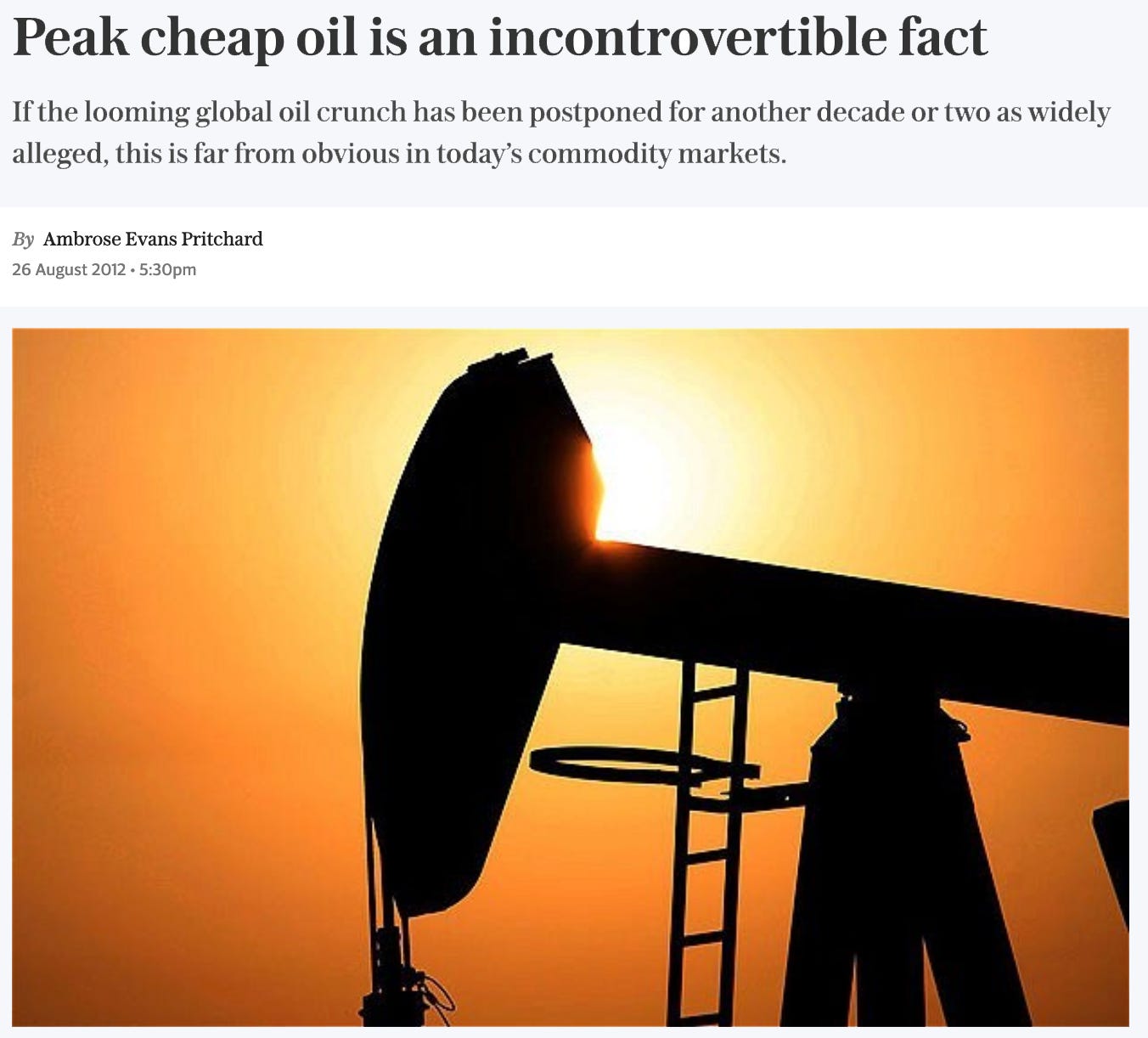Peak Cheap Oil is a Myth
There’s more than enough for more than long enough.
“We should not underestimate ourselves, because if lots of individuals go together then we can accomplish almost anything.” – Greta Thunberg
In 2005, investment banker Matthew Simmons published a book that spooked Wall Street and the general public alike. Based on his reading of some 200 academic papers, Twilight in the Desert: The Coming Saudi Oil Shock and the World Economy predicted that the oil fields of Saudi Arabia were reaching exhaustion, that the easy-to-get oil was already extracted, and that production in the Kingdom was set to fall off a cliff. Simmons also implied that this had to be known within Saudi Aramco and dedicated several chapters to questioning the company’s public statements about its future production plans, all but accusing it of engaging in a cover-up. Given Saudi Arabia’s central role in the oil markets and the commodity’s critical importance to the global economy, the book foretold an ominous future.
Supremely confident in his thesis, Simmons bet John Tierney, then a columnist for The New York Times, that the price of oil would average more than $200 a barrel in the year 2010, up from approximately $65 a barrel when the book was published. Each party pledged $5,000 for the infamous wager, and Simmons was looking prescient during the energy crisis of 2008 when oil reached an all-time high of $147 a barrel. Unfortunately for him, the cycle turned, oil prices normalized, and the bet was eventually lost. Oil averaged approximately $80 a barrel in 2010—as it roughly has in 2023—and Saudi Arabia’s oil production remains as prolific as ever. The country is investing heavily to grow its production capacity to some 13 million barrels a day by 2027, significantly higher than it was when Twilight hit the bookshelves. Sadly, Simmons passed away in August of 2010, but his estate made good on his debt.
Simmons’ book was just another in a long line of Malthusian techno-pessimist thinking inspired by the likes of Paul Ehrlich and other founders of the modern environmental movement. That the material resources of Earth are objectively finite, and the world’s population continues to expand are both undeniable facts, but that the two will collide in a crisis of catastrophe in a time frame that matters is a different proposition altogether. The seductive nature of this thesis—the kind of assertion that feels like it could be true—makes it difficult to vanquish, and variants can be found in all manner of contemporary academic and economic research.
As total global oil production grinds inexorably higher in defiance of scores of surely-we-must-be-near-the-top predictions, a new school of thought is gaining popularity. While the total amount of oil produced continues to grow, so the thinking goes, a phase of peak cheap oil has been entered in which incremental barrels are harder to find and more expensive to develop. The idea is not a new one—the headline below was taken from 2012 and captures the thoughts of one of our favorite contra-indicators, Ambrose Evans Pritchard—but it has been making a comeback among a cross-section of energy market observers. The new genesis of this old idea is the belief that recent production gains observed in the US shale patch are unsustainable, and once this final engine of oil growth is exhausted, only the expensive stuff remains to be developed.
Why do so many analysts insist on assigning decade- or even century-long consequences to violent gyrations in commodity prices that tend to work themselves out in a matter of years? Are we truly on the verge of pushing the planet’s resources to its limits? Is peak cheap oil truly behind us, never to be encountered again? Count us among those who would fade such fears. Let’s explore why.



